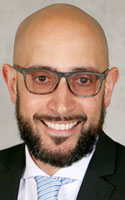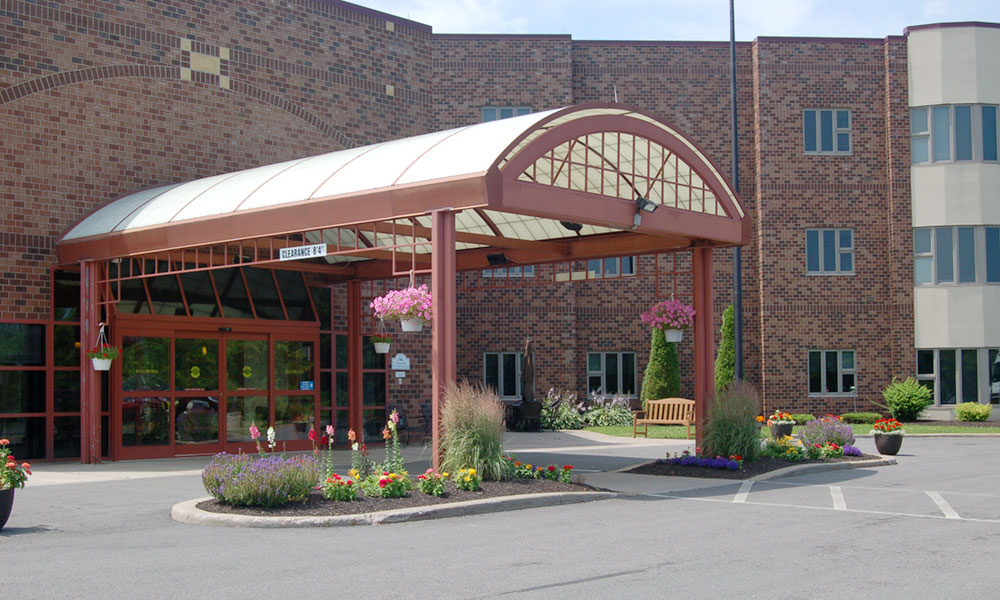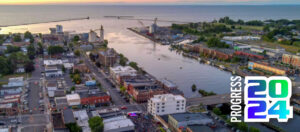Senior living communities will be very different in the coming years ahead, says manager of The Manor at Seneca Hill and Springside at Seneca Hill
By Lou Sorendo

While Oswego Hospital became the focus of attention during the COVID-19 pandemic, Oswego Health’s senior care facilities for the elderly and physically challenged populations were certainly not immune to significant challenges.
Jason Santiago, chief operating officer at The Manor at Seneca Hill and Springside at Seneca Hill, said given the obstacles COVID-19 presents, the senior living industry will be adapting to a “new normal” going forward.
The Manor at Seneca Hill is a 120-bed 24-hour skilled nursing care facility and provides transitional care (short-term rehab) services, including occupational, physical and speech therapies.
The 57-unit Springside at Seneca Hill offers retirement living to those aged 62 and older.
Individuals can choose to live in an apartment, duplex or cottage-style home.
“This pandemic had devastating effects on the senior population globally,” Santiago said. “I suspect the ‘new normal’ will consist of new screening protocols of people entering senior facilities.”
But a host of other things needs to be considered, he noted.
All senior living facilities will likely be tasked with implementing new infection control protocols that have more substance to them, including stock inventory of personal protective equipment, Santiago noted.
Also, how residents have gone about their daily life in senior facilities may need to be changed, such as dining processes, he said.
“Dining is done in larger group settings in senior living facilities, whether it be nursing homes, assisted living, or senior independent living facilities,” he said. “Having eight to 10 people sitting close together at one table may have to change. I think how senior living communities exist today will be very different in the coming years ahead.”
Santiago said there are many factors to consider when it comes to developing the necessary strategies for facilities such as The Manor at Seneca Hill and Springside at Seneca Hill to keep COVID-19 at bay.
‘Information overload’
“I would say one of the most important things we did in keeping COVID-19 out of Springside at Seneca Hill and The Manor at Seneca Hill is communicate the information about the virus from the Centers for Disease Control and Prevention, state and county departments of health and the Centers for Medicare and Medicaid Services to the staff taking care of these people,” he noted.
Santiago said it’s been “information overload” during the pandemic.
“And information was changing at times hourly. We needed to share this with staff regardless what shift they worked,” he said.
Also, the facilities began implementing “pop-up” infection control and hand-washing audits with staff at The Manor at Seneca Hill.
Proper hand-washing technique is key in reducing the spread of infection, according to CDC guidelines.
“So we conducted these unannounced audits as part of our infection control practice. The other strategy that stands out to me is limiting the people in the building to those who truly need to be there and making sure that any outside health professionals or vendors that come into these facilities are screened before they enter them,” he said.
Santiago said it is imperative that non-staff personnel only go from the single point of entry into the facility to only the area they need to be going, and exit the same way they came in.
“Limiting the movement of those people in senior communities will reduce the spread of infection to seniors,” he added.
“For the foreseeable future, we will be screening our staff and medical personnel when entering the facility to protect our residents from COVID-19,” he said.
Infection busters
Santiago said the staff at Oswego Health’s senior care facilities needs to go back to basics when it comes to taking measures to identify infections early among resident populations.
“Caregivers in our facilities are the ones who are interacting and providing care to our residents of our communities every single day,” Santiago said. “They know the residents the best. When they see a change in a resident, they need to take action. That could be obtaining vitals, informing their charge nurse or medical provider, and coordinating residents’ care to obtain necessities such as lab work.”
Santiago noted it is vital to assess the supply of personal protective equipment and initiate measures to optimize current supply.
He said since the pandemic started, The Manor at Seneca Hill has been tracking its PPE inventory daily.
“All New York state nursing homes and assisted living communities have had to report their PPE supply daily for quite some time,” Santiago said.
He said he would not be surprised during the “new normal” when senior care facilities will be required to add to their emergency management plans, PPE inventory and management protocols.
“I suspect both the federal and state governments are going to drive this initiative for all senior living communities,” he noted.
Meanwhile, Santiago said it is essential to execute contact tracing as part of the process of combating COVID-19.
Contact tracing is the process of identification of people who may have come into contact with an infected person and subsequent collection of further information about these contacts.
He said this is critical and staff needs to conduct contact tracing in a timely fashion and accurately so health department officials can identify where the COVID-19 “hot spots” are.
“Getting that information to the public will hopefully lead to those non-infected people to avoid those hot spots,” he said.
Santiago said in terms of protecting health care personnel, it is critical to have the right PPE and education.
“The strategy to me is review your PPE inventory daily, assess where you’re deficient and obtain the PPE you need,” he said. “The biggest struggle in this COVID-19 pandemic was there was not enough supply of PPE because the demand was so high.”
He said he expects to see a requirement for all health care facilities, including senior care facilities, to have a certain required supply of PPE.
“Education is a very key piece that goes along with this because you can have all the PPE on hand, but if the staff doesn’t utilize it properly, the PPE is useless, such as N95 masks,” he said.
An N95 mask or N95 respirator is a particulate-filtering face piece respirator that meets the U.S. National Institute for Occupational Safety and Health N95 classification of air filtration, meaning that it filters at least 95% of airborne particles.
Contagion control
Santiago presented several steps necessary when it comes to isolating symptomatic patients.
One of the most challenging assignments is to keep symptomatic patients separated from the well residents, such as placing them in a separate unit, or on a different hall or floor if possible.
“It’s also important to discharge those symptomatic residents to the hospital if their conditions deteriorate,” he said. “In all likelihood, symptomatic COVID-19 seniors will need some type of acute care, especially if they have other underlying conditions.”
Another vital step is to assign staff so that only health care workers caring for COVID-19 residents provide care with those residents and don’t provide care for well residents, Santiago added.
Springside at Seneca Hill residents are all independent residents who don’t require nursing care. They all live in their own individual apartments, duplexes, or cottages.
The Manor at Seneca Hill was already isolating new admissions during the pandemic in private rooms as COVID-19 crept in from the community and hospital. The Manor’s daily census declined once area hospitals were forced to shut down surgeries.
“I think everything has to be on the table when it comes to future pandemic planning, which would include creating single-occupancy isolation rooms, he noted.




